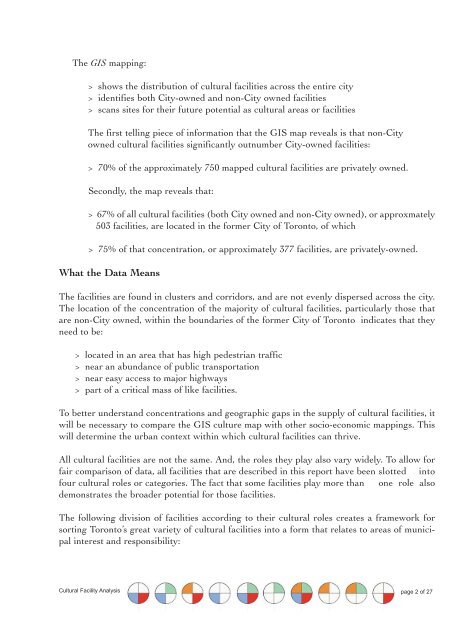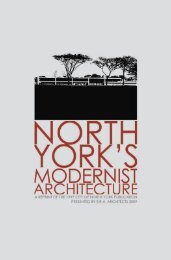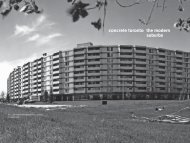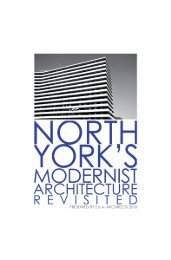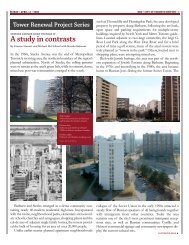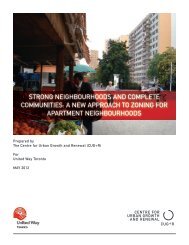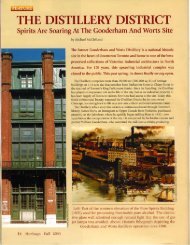A Map of Toronto's Cultural Facilities - ERA Architects Inc.
A Map of Toronto's Cultural Facilities - ERA Architects Inc.
A Map of Toronto's Cultural Facilities - ERA Architects Inc.
Create successful ePaper yourself
Turn your PDF publications into a flip-book with our unique Google optimized e-Paper software.
The GIS mapping:<br />
> shows the distribution <strong>of</strong> cultural facilities across the entire city<br />
> identifies both City-owned and non-City owned facilities<br />
> scans sites for their future potential as cultural areas or facilities<br />
The first telling piece <strong>of</strong> information that the GIS map reveals is that non-City<br />
owned cultural facilities significantly outnumber City-owned facilities:<br />
> 70% <strong>of</strong> the approximately 750 mapped cultural facilities are privately owned.<br />
Secondly, the map reveals that:<br />
> 67% <strong>of</strong> all cultural facilities (both City owned and non-City owned), or approxmately<br />
503 facilities, are located in the former City <strong>of</strong> Toronto, <strong>of</strong> which<br />
> 75% <strong>of</strong> that concentration, or approximately 377 facilities, are privately-owned.<br />
What the Data Means<br />
The facilities are found in clusters and corridors, and are not evenly dispersed across the city.<br />
The location <strong>of</strong> the concentration <strong>of</strong> the majority <strong>of</strong> cultural facilities, particularly those that<br />
are non-City owned, within the boundaries <strong>of</strong> the former City <strong>of</strong> Toronto indicates that they<br />
need to be:<br />
> located in an area that has high pedestrian traffic<br />
> near an abundance <strong>of</strong> public transportation<br />
> near easy access to major highways<br />
> part <strong>of</strong> a critical mass <strong>of</strong> like facilities.<br />
To better understand concentrations and geographic gaps in the supply <strong>of</strong> cultural facilities, it<br />
will be necessary to compare the GIS culture map with other socio-economic mappings. This<br />
will determine the urban context within which cultural facilities can thrive.<br />
All cultural facilities are not the same. And, the roles they play also vary widely. To allow for<br />
fair comparison <strong>of</strong> data, all facilities that are described in this report have been slotted into<br />
four cultural roles or categories. The fact that some facilities play more than one role also<br />
demonstrates the broader potential for those facilities.<br />
The following division <strong>of</strong> facilities according to their cultural roles creates a framework for<br />
sorting Toronto’s great variety <strong>of</strong> cultural facilities into a form that relates to areas <strong>of</strong> municipal<br />
interest and responsibility:<br />
<strong>Cultural</strong> Facility Analysis<br />
page 2 <strong>of</strong> 27


